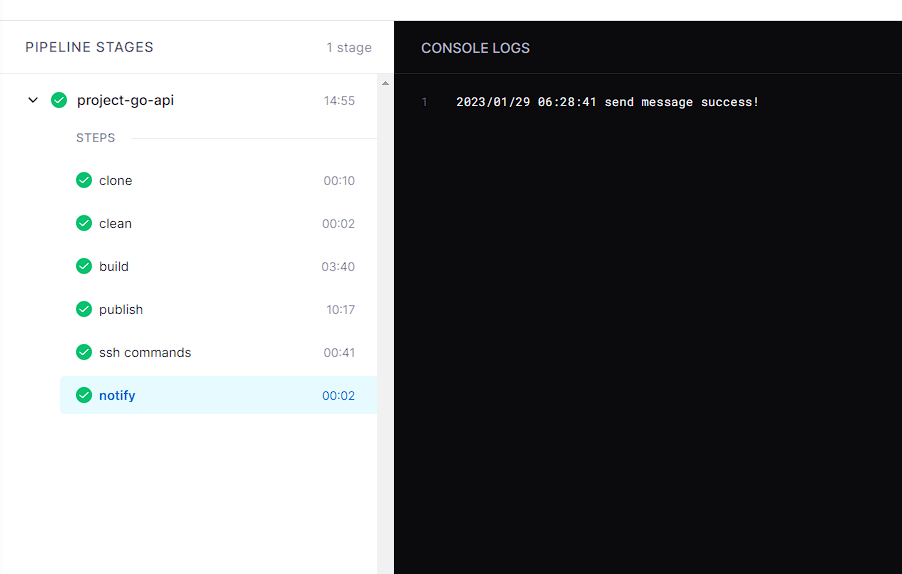golang-IO缓冲
package main import ( "fmt" "os" "time" ) var ( text = "recall 74 by radic, recall 0 by milvus_short, recall 0 by milvus_long\n" ) // 带缓存的FileWriter type BufferedFileWriter st…
2023-6-07 19:01
|
|
|
97 字
|
golang日志切割并压缩
关于日志的一些问题: 单个文件过大会影响写入效率,所以会做拆分,但是到多大拆分? 最多保留几个日志文件?最多保留多少天,要不要做压缩处理? 一般都使用 lumberjack这个库完成上述这些操作 lumberjack //info文件writeSyncer infoFileWriteSyncer := zapcore.AddSync(&lu…
2023-5-08 10:51
|
|
|
1862 字
|
go项目使用drone打包部署-CICD
Drone文件示例: .drone.yml kind: pipeline type: docker name: project-go-api #设置挂载 volumes: #Go编译缓存 - name: pkgdeps host: path: /tmp/drone/cache/project-go-api/cache #Docker环境 - nam…
2023-1-30 12:52
|
|
|
142 字
|
Uber Go规范:编码和命名
Uber 是一家美国硅谷的科技公司,也是 Go 语言的早期 adopter。其开源了很多 golang 项目,诸如被 Gopher 圈熟知的 zap、jaeger 等。2018 年年末 Uber 将内部的 Go 风格规范 开源到 GitHub,经过一年的积累和更新,该规范已经初具规模,并受到广大 Gopher 的关注,本文是对规范的整理 来源:ht…
2022-5-25 15:39
|
|
|
1596 字
|
Go日志库-Zap
相比其他语言,Go 标准库里的 log 模块已经很好用了。但还是缺少一些常用的功能,比如按等级输出。于是又出现了许多第三方库,例如最出名的 logrus,不过已进入维护状态。作者认为 logrus 已经完成了它的使命——推动结构化日志的发展。至于之后的扩展优化,将有更优秀的作品。 这里将记录其中之一—— zap。 zap 是 uber 开源的高性能…
2022-5-23 15:41
|
|
|
1823 字
|
从0开始搭建GoWeb脚手架
基本框架 Web框架:Gin 数据库:Mysql 配置中心&注册中心:Nacos && 本地配置文件 配置文件读取和监听:viper env配置:env v6 配置类 MySQL import ( "fmt" ) // MySQL配置 type mysqlConfig struct { Host string `mapstr…
2022-5-13 19:15
|
|
|
170 字
|

